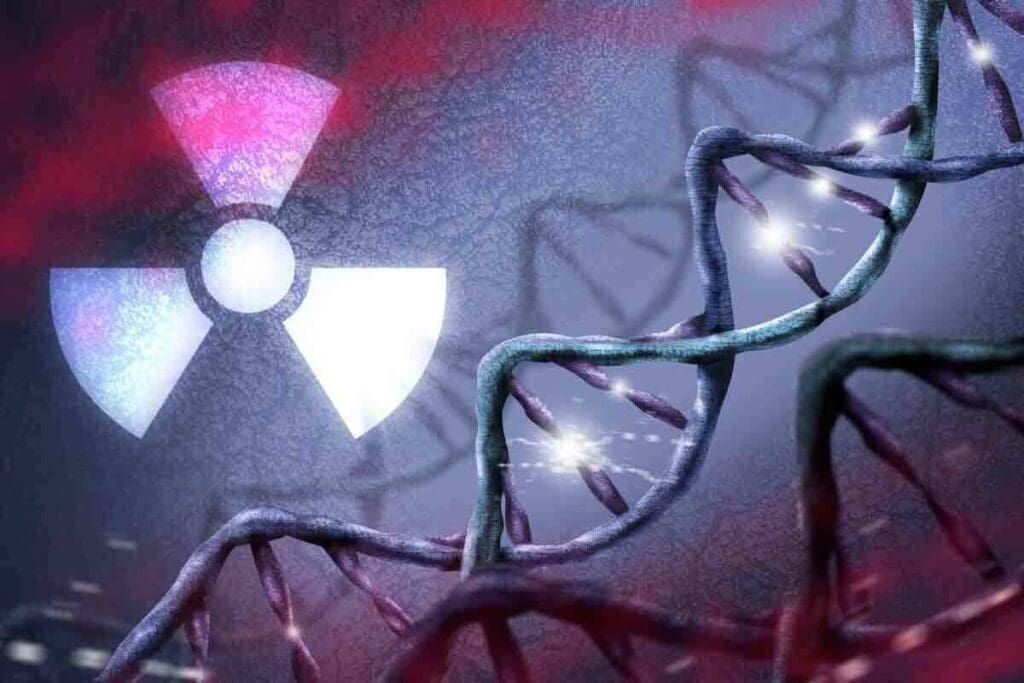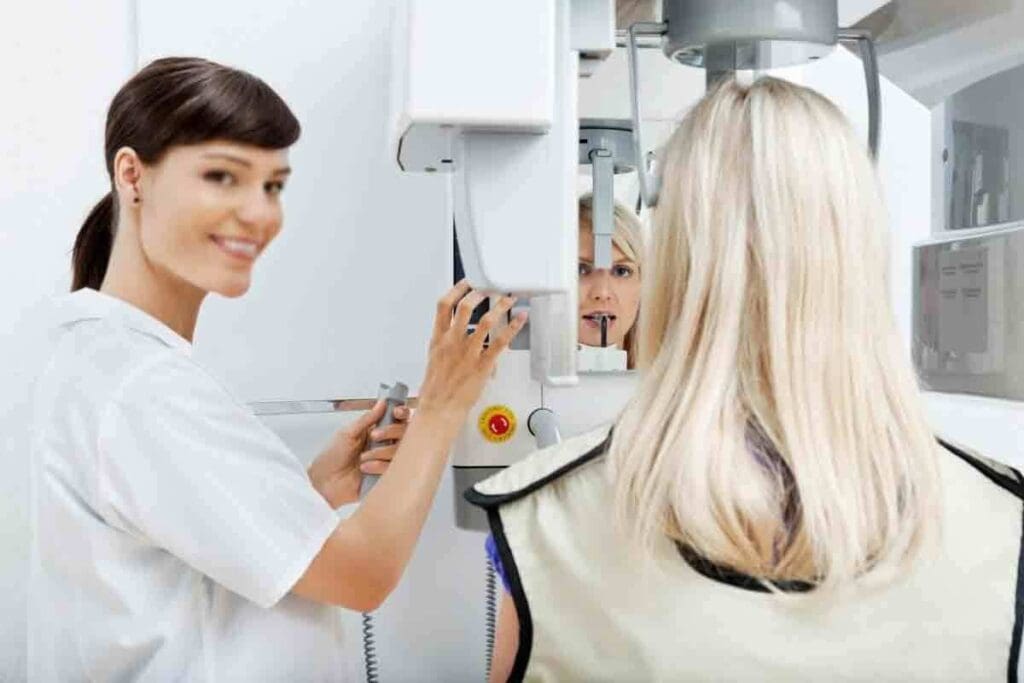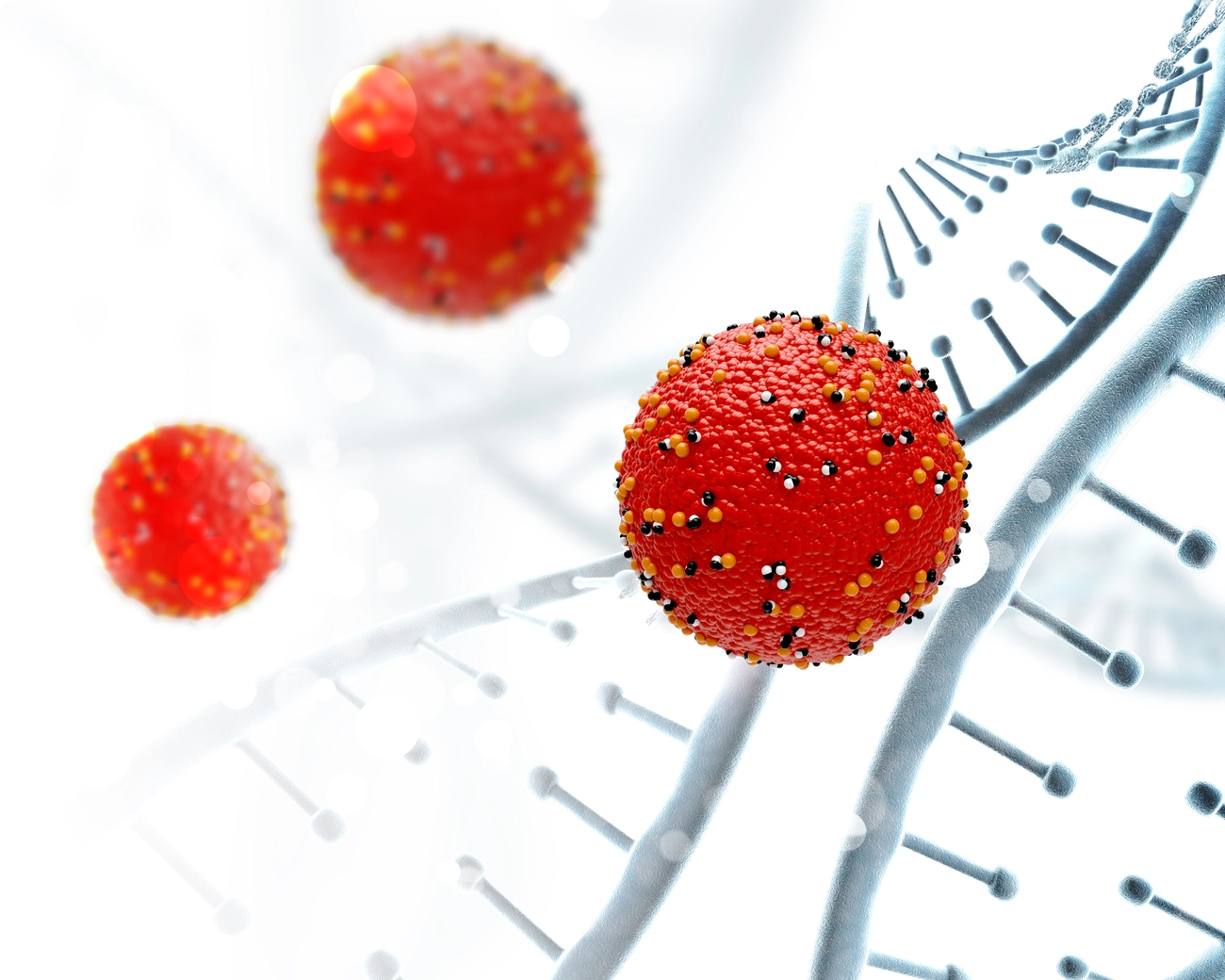Last Updated on November 27, 2025 by Bilal Hasdemir

When you’re exposed to radiation, acting fast is key to keep yourself safe. Taking immediate steps can greatly reduce the harm. For example, removing dirty clothes can get rid of up to 90% of radioactive particles, as studies show.
Next, it’s important to wash your skin with mild soap and water. At LivHospital, we teach our patients how to remove radiation safely using proven decontamination steps. Our goal is to make sure you’re safe and worry-free with our radiation decontamination methods.
Key Takeaways
- Remove contaminated clothing immediately to reduce radiation exposure.
- Wash exposed skin with gentle soap and water.
- Follow evidence-based decontamination protocols for effective radiation removal.
- Seek medical guidance from trusted institutions like LivHospital.
- Understand that timely action is key to minimize radiation contamination.
Understanding Radiation Exposure and Contamination

It’s important to know about radiation exposure to keep people safe. There are different ways radiation can affect us, and knowing these helps us stay safe.
We’ll look at the kinds of radiation exposure, the difference between irradiation and contamination, and how radiation affects our bodies. This info is key to acting right if we might be exposed.
Types of Radiation Exposure
Radiation exposure can be external or internal. External exposure happens when radiation comes from outside the body. Internal exposure occurs when we breathe in, eat, or absorb radioactive materials.
Being near a radiation source can cause external exposure, like during some medical tests or work. Internal exposure is harder to handle because it involves radioactive substances inside us.
Difference Between Irradiation and Contamination
It’s important to know the difference between irradiation and contamination. Irradiation means being exposed to radiation from outside, but we don’t become radioactive. Contamination happens when radioactive material gets inside or on us, making us radioactive.
How Radiation Affects the Human Body
The impact of radiation on our bodies depends on the dose and how long we’re exposed. High doses can cause acute radiation syndrome (ARS). This damages our bone marrow, lungs, stomach, and brain.
| Radiation Dose (Sv) | Health Effects |
| 0-0.25 | No detectable effects |
| 0.25-1 | Mild symptoms, possible changes in blood cell count |
| 1-2 | Moderate symptoms, including nausea and hair loss |
| 2-4 | Severe symptoms, risk of ARS |
| >4 | High risk of severe ARS, potentially fatal |
Knowing these risks helps us take the right steps to stay safe if we’re exposed to radiation.
Immediate Actions After Possible Radiation Exposure

Radiation exposure needs quick action and knowing what to do. If you think you’ve been exposed, every second is important.
Assessing the Situation Safely
The first thing to do is to assess the situation safely. This means:
- Stay calm and follow any instructions from local authorities or emergency responders.
- Move away from the radiation source if it’s safe to do so.
- Leave the contaminated area if you’re in one.
It’s important to avoid spreading contamination by staying put until told to move.
When to Seek Emergency Medical Help
If you think you’ve been exposed to radiation, knowing when to get medical help is key. You should get medical help right away if:
- You’ve been directly exposed to a lot of radiation.
- You’re feeling sick, like nausea, vomiting, or skin burns.
- You’ve been touched by radioactive materials.
Getting medical help quickly can help figure out how bad your exposure is and what treatment you need.
First Steps to Minimize Contamination Spread
To stop contamination from spreading, do these things:
- Take off your clothes: This can get rid of up to 90% of surface contamination.
- Shower or bathe: Use soap and water to clean your skin.
- Avoid touching your face or other possibly contaminated areas.
By taking these quick steps, you can lessen the risk of radiation exposure and its bad effects. Also, staying updated through official sources is key during a radiation emergency.
External Decontamination: Removing Surface Radiation
External decontamination is key to removing radioactive particles from the body’s surface. It’s vital to reduce the risks of radiation exposure. We’ll cover the main steps, like removing contaminated clothes and decontaminating the skin. We’ll also talk about special care for wounds and sensitive areas.
Removing and Containing Contaminated Clothing
First, remove contaminated clothes to get rid of up to 90% of radioactive particles. Take off clothes carefully to avoid spreading contamination. Place the clothes in a sealed bag or container to prevent further contamination.
Precautions when removing contaminated clothing:
- Avoid touching the face or other clean areas with contaminated clothing.
- Remove clothing carefully to prevent tearing or shaking that could spread radioactive material.
- If possible, wear gloves to handle contaminated clothing.
Proper Skin Decontamination Techniques
After removing clothes, decontaminate the skin. Wash the skin gently with soap and lukewarm water. Avoid hot water, as it can open pores and increase absorption of radioactive material.
Effective skin decontamination involves:
- Gently washing the affected areas with mild soap and lukewarm water.
- Avoiding scrubbing or using abrasive materials that could damage the skin.
- Rinsing thoroughly to remove soap and radioactive particles.
Decontaminating Wounds and Sensitive Areas
Decontaminating wounds and sensitive areas needs special care. For wounds, gently flush with sterile saline solution if available. For sensitive areas, like eyes, ears, and mouth, use gentle, appropriate cleaning methods to avoid damage.
Considerations for sensitive areas:
| Area | Decontamination Method |
| Eyes | Gently flush with water or saline solution. |
| Ears | Carefully rinse the outer ear with water; avoid inserting anything into the ear canal. |
| Mouth | Rinse with water; avoid swallowing contaminated water. |
By following these steps for external decontamination, individuals can significantly reduce their exposure to radioactive materials. It’s vital to remain calm and follow these procedures carefully to ensure effective decontamination.
How to Remove Radiation from Different Body Parts
To remove radiation, knowing how to clean each body part is key. Each area needs a special way to clean it well. This helps avoid radiation exposure.
Hair and Scalp Decontamination
Decontaminating hair and scalp needs gentle yet effective methods. Wash hair with mild shampoo and rinse well to remove radioactive particles. Avoid hot water to prevent trapping radioactive material in hair cuticles.
Key steps for hair and scalp decontamination:
- Wash hair with mild shampoo
- Rinse thoroughly with lukewarm water
- Avoid using hot water
- Gently towel-dry or air-dry
Face, Eyes, and Ears Cleaning Procedures
Cleaning the face, eyes, and ears needs careful attention. Use a gentle cleanser and lukewarm water on the face. Avoid abrasive materials that could irritate the skin or push radioactive particles into pores.
Flush eyes with lukewarm water or saline solution to remove debris. Clean the outer ear with a damp cloth, avoiding the ear canal.
Decontaminating Hands, Feet, and Nails
Hands, feet, and nails are easily contaminated. Wash these areas with soap and lukewarm water. Pay extra attention to the areas between fingers and toes, and under the nails.
Effective hand and foot decontamination involves:
- Thorough washing with soap and lukewarm water
- Scrubbing between fingers and toes
- Cleaning under the nails
- Rinsing thoroughly and drying
Nasal Irrigation and Mouth Rinsing
Nasal irrigation and mouth rinsing are key for removing inhaled or ingested radioactive particles. Use a saline solution for nasal irrigation. For mouth rinsing, a mild saline or baking soda solution works well.
It’s essential to follow proper technique:
- Use sterile or distilled water for solutions
- Follow proper nasal irrigation technique to avoid complications
- Rinse mouth thoroughly, ensuring to spit out the solution
By following these tailored decontamination procedures, individuals can effectively reduce radiation exposure. This promotes a safer recovery process.
Internal Decontamination: Medical Interventions
Medical treatments are key to fighting radiation exposure. They help keep radioactive materials from being absorbed by the body. This is called internal decontamination.
Potassium Iodide for Radioactive Iodine Exposure
Potassium iodide is vital for those exposed to radioactive iodine. It helps block radioactive iodine from reaching the thyroid gland. This lowers the risk of thyroid cancer and other thyroid issues. It’s important to take potassium iodide as directed by a doctor to get the right amount and timing.
“The effectiveness of potassium iodide in blocking thyroid uptake of radioactive iodine is well-documented, making it a vital component of radiation emergency response plans.”
Nuclear Regulatory Commission
Prussian Blue for Cesium and Thallium Contamination
Prussian blue helps with cesium and thallium contamination. It binds to these radioactive materials in the gut, reducing their absorption. This treatment is very helpful in cases of cesium or thallium exposure.
- Prussian blue is taken by mouth.
- It works best when started right after exposure.
- Doctors need to watch its effects and side effects.
DTPA and Other Chelating Agents for Heavy Metal Radionuclides
DTPA and other chelating agents treat heavy metal radionuclide exposure. These agents bind to radioactive metals, making them easier to remove from the body. This reduces the body’s radiation dose.
- DTPA is given through an IV or by inhalation.
- It helps remove certain radionuclides from the body.
- Quick medical help is needed to choose the right treatment.
These treatments are key to dealing with radiation exposure. They help reduce the harm from internal contamination. Knowing about these treatments helps people handle radiation risks better.
Supportive Measures to Enhance Radiation Elimination
Supportive measures are key when dealing with radiation exposure. They help the body get rid of radionuclides more effectively. These steps support recovery and boost the body’s ability to clear out harmful substances.
Hydration and Its Role in Radionuclide Excretion
Hydration is very important after radiation exposure. Drinking enough water helps flush out radionuclides from the body. This reduces the chance of long-term exposure. Drinking lots of water supports the body’s detox process.
“Drinking water is essential for helping the body eliminate toxins, including radionuclides,” say medical experts. Staying hydrated is a simple yet effective way to aid in radiation elimination.
Nutritional Support During Recovery
Nutritional support is key during recovery after radiation exposure. Eating a balanced diet with antioxidants, vitamins, and minerals helps repair cells and boost the immune system. Foods rich in antioxidants, like fruits and vegetables, are very beneficial.
- Eat a balanced diet with lots of fruits, vegetables, and whole grains.
- Avoid foods high in processed ingredients and sugars.
- Drink plenty of water all day long.
Rest and Recuperation Importance
Rest and recuperation are vital for recovery. Enough rest lets the body focus on healing. Getting enough sleep and avoiding hard activities helps a lot in recovery.
“Rest is a critical component of the healing process, allowing the body to recover from the stresses of radiation exposure.”
Medical Expert
Adding these supportive measures to your recovery plan can help your body get rid of radiation better. It also supports your overall health and well-being.
Specific Decontamination Protocols for Different Exposure Scenarios
It’s key to know the right decontamination steps for different situations. This includes nuclear accidents, medical procedures, and industrial settings. Each situation needs its own approach to remove radiation.
Nuclear Accident or Disaster Response
When a nuclear accident happens, quick action is vital to reduce radiation risks. Decontamination protocols include taking off contaminated clothes, showering, and using special cleaners.
It’s also important to check how contaminated something is and use the right protective gear. Communities hit by nuclear accidents might also clean soil and surfaces.
Medical Radiation Exposure
Medical procedures can lead to radiation exposure. While these are controlled, accidents can happen. In medical settings, the goal is to protect patients, staff, and others. This is done by using lead shielding and disposing of contaminated items properly.
Patients who have had radioactive treatments, like radioactive iodine therapy, need special care. They might be isolated and given tips on hygiene and waste to prevent spreading contamination.
Occupational Exposure in Industrial Settings
Workers in places like nuclear power plants face radiation risks. Decontamination for them includes regular radiation checks, wearing PPE, and strict hygiene. This helps prevent spreading contamination.
Cleaning equipment and facilities involves deep cleaning and sometimes special tools to remove radiation. Training is key to make sure workers know how to follow these protocols.
Myths vs. Facts: Debunking Radiation “Detox” Claims
After radiation exposure, false information about “detox” methods can be dangerous. The term “radiation detox” is often misused, causing confusion. We will clear up the myths and facts about radiation “detox” claims. This will help us understand the best ways to deal with radiation exposure.
Unproven Decontamination Methods to Avoid
There are many unproven methods claiming to “detox” the body from radiation. These include:
- Special diets claiming to remove radionuclides
- Herbal supplements said to help get rid of radiation
- Saunas and other detox rituals
These methods have no scientific proof and can be dangerous. As one expert says,
“There’s no magic pill or diet that can remove radiation from the body. Relying on unproven methods can divert attention from evidence-based treatments.”
Why General “Radiation Cleanses” Don’t Work
General “radiation cleanses” have no scientific support. Dealing with radiation is complex, and a single “cleanse” can’t handle all types of radiation or individual exposure levels. Effective decontamination needs a customized approach based on the type and extent of exposure.
For example, exposure to radioactive iodine needs specific treatment with potassium iodide. Other radionuclides might require different treatments. A general “cleanse” can’t replace medical evaluation and treatment.
Evidence-Based Approaches vs. Pseudoscience
It’s important to tell the difference between evidence-based methods and pseudoscientific claims. Evidence-based methods include:
- Medical interventions like potassium iodide for radioactive iodine exposure
- Chelation therapy for certain heavy metal radionuclides
- Proper wound care and decontamination techniques
These methods are supported by scientific research and medical guidelines. On the other hand, pseudoscientific claims often rely on unproven theories or anecdotal evidence. We should trust credible sources and medical professionals for radiation decontamination.
The key to effective radiation decontamination is a scientifically grounded approach, tailored to the specific exposure scenario. By sticking to evidence-based methods, we can ensure the best outcomes for those exposed to radiation.
Conclusion: Preparing Your Personal Radiation Safety Plan
Creating a personal radiation safety plan is key to lowering radiation risks. We’ve covered the main steps and strategies for handling a radiation emergency. By learning how to remove radiation and taking action, you can greatly reduce exposure risks.
A good radiation safety plan means knowing where radiation can come from. It also means understanding how to safely check the situation and knowing how to clean up. We stress the need for being ready for radiation emergencies. This way, you’ll know how to deal with radiation in your body.
By using the advice in this article, you can make a detailed radiation safety plan. This plan will help you handle radiation exposure safely. It will keep you and others safe.
FAQ
What is the first step in decontaminating after radiation exposure?
First, remove contaminated clothing. This stops radiation from spreading to other parts of your body and to others.
How do I decontaminate my skin after radiation exposure?
Wash exposed skin with mild soap and lukewarm water. Don’t use hot water or scrub hard, as it can irritate your skin.
What is the difference between irradiation and contamination?
Irradiation means your body is exposed to radiation but no radioactive material stays on or inside you. Contamination occurs when radioactive material is on your skin or inside your body.
How can I minimize internal radiation exposure?
To reduce internal radiation, medical treatments like potassium iodide for radioactive iodine, Prussian blue for cesium and thallium, and DTPA for heavy metals can help.
What supportive measures can enhance radiation elimination?
Drinking plenty of water, getting enough nutrients, and resting well can help your body get rid of radiation.
Are there specific decontamination protocols for different exposure scenarios?
Yes, different situations like nuclear accidents, medical exposure, and work-related exposure need their own decontamination plans.
What are some evidence-based approaches to radiation decontamination?
Proven methods include medical treatments like potassium iodide and DTPA, proper skin cleaning, and staying hydrated and well-nourished.
How do I decontaminate hair and scalp?
Use a mild shampoo to wash your hair and gently scrub your scalp. Rinse well with lukewarm water.
Can general “radiation cleanses” help remove radiation from the body?
No, “radiation cleanses” don’t work to remove radiation. Stick to proven medical treatments.
How can I prepare a personal radiation safety plan?
Learn about radiation risks, know what to do right after exposure, and understand different decontamination protocols. This will help you create a safety plan.
What is the role of hydration in radionuclide excretion?
Drinking enough water is key for getting rid of radionuclides. It helps your kidneys work better and aids in removing radioactive substances.
When should I seek emergency medical help after radiation exposure?
Call for emergency help right away if you’ve been exposed to a lot of radiation, have radioactive material on you, or feel sick like nausea, vomiting, or skin burns.
References
- National Institutes of Health. (2020). Calcium-DTPA and Zinc-DTPA. In LiverTox: Clinical and Research Information on Drug-Induced Liver Injury. https://www.ncbi.nlm.nih.gov/books/NBK548321/






